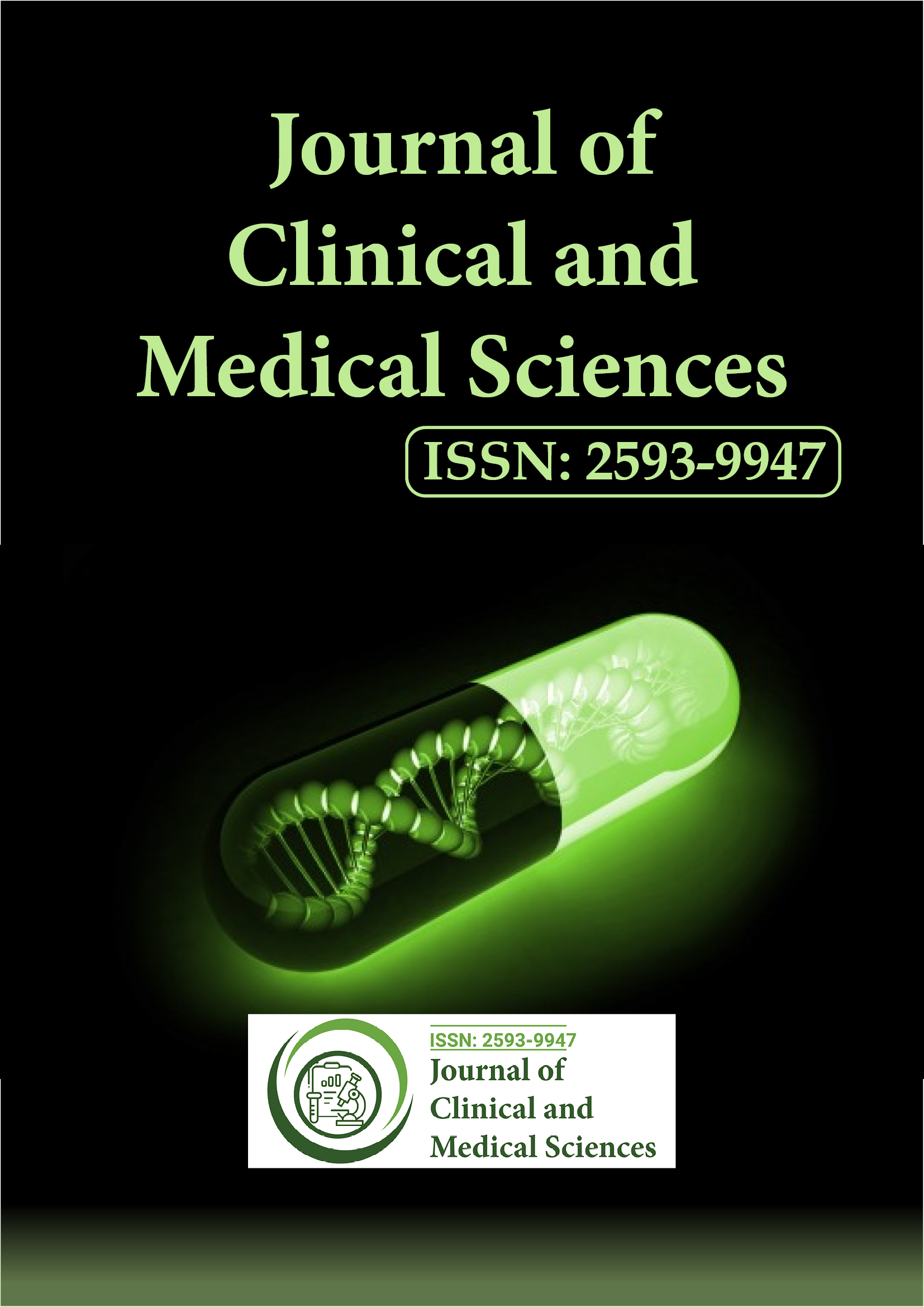Indexed In
- Euro Pub
- Google Scholar
Useful Links
Share This Page
Journal Flyer

Open Access Journals
- Agri and Aquaculture
- Biochemistry
- Bioinformatics & Systems Biology
- Business & Management
- Chemistry
- Clinical Sciences
- Engineering
- Food & Nutrition
- General Science
- Genetics & Molecular Biology
- Immunology & Microbiology
- Medical Sciences
- Neuroscience & Psychology
- Nursing & Health Care
- Pharmaceutical Sciences
Opinion Article - (2024) Volume 8, Issue 3
Innovations in Clinical Medicine: Determining the Imminent of Patient-Centered Healthcare
Hye Yoon*Received: 27-Aug-2024, Manuscript No. JCMS-24-27484 ; Editor assigned: 30-Aug-2024, Pre QC No. JCMS-24-27484 (PQ); Reviewed: 13-Sep-2024, QC No. JCMS-24-27484 ; Revised: 20-Sep-2024, Manuscript No. JCMS-24-27484 (R); Published: 27-Sep-2024, DOI: 10.35248/2593-9947.24.8.294
Description
Innovations in clinical medicine are restructuring the healthcare scenery, placing a greater highlighting on patient-centre care while enhancing the effectiveness and accessibility of treatments. A major force driving these changes is the shift toward precision medicine, which focuses on modifying treatments to the individual characteristics of each patient. Unlike the traditional “one-size-fits-all” approach, precision medicine uses genetic, environmental and lifestyle information to develop personalized treatment plans. This approach has proven especially beneficial in oncology, where targeted therapies based on genetic profiles are providing more effective, less toxic alternatives to conventional treatments like chemotherapy. But its impact extends beyond cancer; it is also making strides in fields such as cardiology, neurology and psychiatry, where understanding genetic variations can lead to better disease management and improved outcomes.
Alongside precision medicine, advancements in telemedicine have played a pivotal role in expanding access to healthcare. Telemedicine allows patients to consult with healthcare providers remotely, using technology like video calls or mobile apps, which has proven to be particularly valuable during the COVID-19 pandemic. This model reduces the need for travel and allows patients in rural or underserved areas to access specialized care that may have previously been out of reach. It also offers a convenient solution for individuals managing chronic conditions who require regular follow-ups, thus minimizing disruptions to their daily lives. Additionally, telemedicine is helping address mental health needs, providing patients with easier access to therapists and counselors and removing some of the logistical and social barriers to seeking care.
Artificial Intelligence (AI) and Machine Learning (ML) are further revolutionizing clinical medicine by enhancing diagnostic capabilities and supporting decision-making. AI algorithms can analyze large volumes of medical data such as medical imaging, lab results and patient histories faster and more accurately than traditional methods. AI-powered tools in radiology, for instance, can identify early signs of diseases like cancer, heart disease, or neurological disorders, often before they are detectable by the human eye. By supporting clinicians with faster and more accurate diagnostics, AI not only improves early detection but also contributes to more personalized and effective treatment plans. Additionally, AI is being applied in predictive analytics, where it analyzes patient data to identify those at risk of developing severe health issues, enabling timely interventions and reducing preventable complications.
Minimally invasive surgery is another key area of innovation that is improving patient care. These techniques use smaller incisions and advanced imaging technologies to perform surgeries with minimal disruption to the body. Robotic-assisted surgeries, which offer greater precision, flexibility and control, are transforming the way complex procedures are carried out. The benefits of minimally invasive surgery are clear: Patients experience less pain, shorter recovery times and a reduced risk of complications, such as infections or blood loss. These advantages are particularly important for older adults or patients with multiple health conditions, as they reduce the overall strain of surgery and help speed up recovery. As robotic systems continue to evolve, the scope of minimally invasive procedures is expected to broaden, enabling even more surgeries to be performed with these enhanced techniques.
At the same time, patient engagement is being enhanced through digital health tools. Wearable devices, mobile health apps and patient portals allow individuals to take a more active role in managing their own health. For example, wearables that track vital signs like heart rate, sleep patterns and physical activity provide real-time data that patients can use to monitor their conditions and adjust their behaviors accordingly. Mobile apps can help individuals manage chronic diseases like diabetes, hypertension, or asthma, by reminding them to take medication, track symptoms, or attend follow-up appointments. Patient portals, which provide secure access to medical records, lab results and communication with healthcare providers, further empower patients to stay informed and involved in their care. This greater level of engagement has been shown to improve adherence to treatment plans, reduce hospital readmissions and ultimately lead to better health outcomes.
Together, these innovations are fundamentally changing the way healthcare is delivered, creating a more patient-centric system where the focus is on individualized care and patient empowerment. By utilize the power of technology, healthcare providers can offer more personalized treatments, expand access to care and improve diagnostic and treatment accuracy. These advancements are not just improving outcomes but also enhancing the overall patient experience, making healthcare more efficient, accessible and responsive to individual needs. As these technologies continue to evolve, the future of clinical medicine promises to be more interconnected, patient-driven and capable of addressing the diverse needs of an ever-changing global population.
Citation: Yoon H (2024). Innovations in Clinical Medicine: Determining the Imminent of Patient-Centered Healthcare. J Clin Med Sci. 8:294.
Copyright: © 2024 Yoon H. This is an open access article distributed under the terms of the Creative Commons Attribution License, which permits unrestricted use, distribution, and reproduction in any medium, provided the original author and source are credited.
